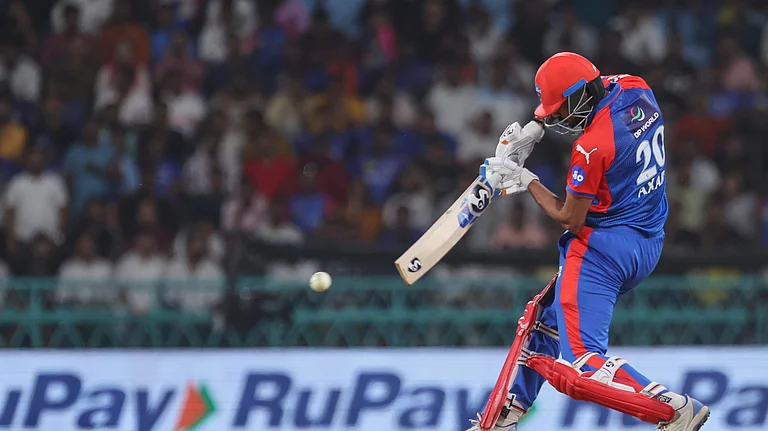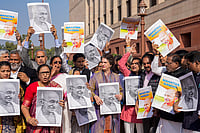THE month-old United Front Government's decision to raise petro-product prices across the board has caused an immediate outcry among trade unions and political parties, including some constituents of the ruling coalition. In Kerala, all trade unions in the transport sector went on a day's strike. In Bombay, taxis stayed off the roads. In Orissa, the opposition BJP members went on indefinite dharna. The Federation of Indian Export Organisations added to the clamour by criticising the move and saying that the resulting higher manufacturing costs will hurt global competitiveness of Indian exports.
That's the politics of it. But as far as the economics of it are concerned, the price hike is clearly a courageous step, and one that needed to be taken. The Oil Pool deficit had gone up to unmanageable levels, and the country's petroleum sector was heading for a collapse if prices were not raised. The Oil Pool deficit—the difference between the cost of production and import of petro-products and the price at which they are sold—reached Rs 5,700 crore in 1995-96—just slightly less than the country's fiscal deficit—and would have hit Rs 11,000 crore if prices had not been raised. "Since the Oil Pool deficit does not appear in the Government's budget, no one pays much attention to it," says a senior Petroleum Ministry official. "The fact remains that it is ruinously high, and the implications are as serious as those of the high fiscal deficit, which everyone talks about." The new measures, the Government claims, will cut the deficit to a more manageable Rs 2,000 crore.
Why prices had to be raised: The simple answer is that the Deve Gowda Government is paying for the sins of the Narasimha Rao administration, which, despite unfavourable conditions and mounting deficits, avoided a revision of petroleum prices, with an eye on the elections. The last time prices were raised was in 1994. Says S.L. Rao, economist and former director of the National Council for Applied Economic Research (NCAER): "In order to keep inflation low, the previous government had postponed any increase in administered prices. It has created a cycle by delaying price revision, increasing borrowing, letting interest costs rise as a result, and ended up putting pressure on the economy." The fact remains that in every single year of the previous government's tenure, there was an increase in the revenue account deficit and a decline in the capital account surplus. This, says Rao, forced the government to borrow more and more to finance capital expenditure. In effect, the Congress government borrowed so much from the future to finance present needs, that at present, the current Government is in a tight spot.
Indeed, according to sources at the Oil Coordination Committee (OCC), the Oil Pool deficit was actually Rs 6,400 crore on March 31, 1996, much higher than the official figure of Rs 5,700 crore. According to these sources, the government showed a lower deficit by transferring some of it to the Finance Ministry's Escrow Account. The high deficit put both the government and oil companies in a bind. After all, shorn of the jargon, the deficit is the oil companies' outstanding dues from the government. As a result, the government was ending up paying interest to the oil companies at the rate of 10.5 per cent per annum on the outstanding amounts—Indian Oil Corporation (IOC) had as as much as Rs 4,000 crore due to it. And the oil companies, faced with a cash crunch, were left with no option but to borrow from the market at high rates. All this could have, in the near future, had an effect on the oil companies' share prices. The Government intends to raise resources through disinvestment in public sector units, and among all the PSUs, the oil company shares will surely fetch the best prices and raise the most money for the Government. So if their health is in doubt, their share prices will fall, and the Government's fund-raising abilities will be ham-strung.
ACCORDING to the Government, the major factors responsible for the deficit during 1995-96 were a depreciation in the rupee from Rs 31.60 to Rs 33.79 to the dollar, increase in imported crude price from $16 per billion barrels to $16.78, and an increase in import of deficit petroleum products, particularly high speed diesel. A note sent by the OCC to the Finance Ministry recently expects this year's petroleum import bill to rise by 46 per cent over the last financial year, from $6.5 billion to a whopping $9.5 billion (Rs 32,100 crore). The calculations are based on a 7-8 per cent increase in the consumption of petroleum products, a further marginal depreciation in the value of the Indian rupee and stabilisation of the world oil prices at current rates.
The OCC is of the view that if consumption of these products increases at this rate, the 1997-98 oil import bill could cross $12 billion. The level of imports is unlikely to fall in the near future. Domestic crude production has declined since the heydays of 1989-90, and demand has been rising, growing by 3.2 per cent in 1993-94, 7.7 per cent in 1994-95, and 10.8 per cent in 1995-96. Naturally, net imports—total imports minus total exports—of petro-products have more than doubled from 8.1 million tonnes in 1993-94 to 16.7 million tonnes in 1995-96.
Add to that the depreciation of the rupee, and the situation gets even stickier. According to available estimates, for every Re 1 depreciation in the rupee, the annual cost of crude import increases over Rs 650 crore. Last year ,rupee fell against the dollar by than Rs 2.
Under these circumstances, the present Government hadno choice but to upwardly revise petro-product prices. While the Government claims that it will be able to wipe out the deficit soon as a result of the price revision, some feel that this will take more time than the mandarins expect. According to an OCC official, with Government payments outstanding, the oil companies have been forced to borrow from the market at rates beyond 21 per cent and since the returns from the current revision will take time to come in, these companies will have to continue to borrow from the market at high rates of interest for some time, thereby putting an extra burden on the Government. Not only this, the mounting outstandings have also put the oil companies' oil supply position at risk as its creditworthiness to raise loans to finance further imports stands eroded because of their failure to make payments.
The subsidy situation: The highest subsidies have always been on kerosene, the primary petroproduct used by the poor and underprivileged. Prices have been kept constant since 1992-93. The new measures also maintain the status quo. As a result, given that demand is increasing, kerosene subsidies will go up from Rs 4,190 crore in 1995-96 to Rs 4,870 crore in 1996-97.
At Rs 2.55 per litre, kerosene is currently cheaper than even unrefined crude. Motor spirit—what we call petrol—is being sold reasonably above its cost of production to feed the high subsidies the Government gives on kerosene and Liquified Petroleum Gas (LPG) or the household cooking gas. According to the Government's own fig-ures, the subsidy on domestic LPG, on which the Government used to dole out a subsidy of Rs 100 per cylinder, increased from Rs 1,410 crore in 1994-95 to Rs 1,630 crore in 1995-96. Even after raising LPG prices by 30 per cent, subsidies will rise in 1996-97 to Rs 1,710 crore.
Indeed, after all the price hikes, the Government will still be subsidising petro-products to the tune of Rs 8,000 crore, 60 per cent of which will be accounted for by kerosene. But, says an economist with a leading industry federation: "There is enough logic to the argument that kerosene needs to be subsidised heavily since the poor would not be able to afford it if prices were raised." However, at the same time, says an OCC official, the Government should have also removed all subsidies on LPG. "All LPG users will definitely pay up Rs 200 per cylinder. And as far as political fallout is concerned, the Government may not find it so difficult to make the principal LPG users—the middle class—understand that a 50 per cent subsidy rate on every cylinder is bleeding the country," he says. This would have brought down the subsidies by another Rs 1,700 crore or so.
And now the effects: If the Government can reach its expressed goal of slashing the deficit to Rs 2,000 crore for 1996-97, that will be no mean achievement. But apart from anything else, the net impact of a rise in petroleum prices will be on overall prices and inflation. While the Government claims that the direct and indirect impact of a 25-30 per cent increase in petroleum prices will push up the infla-tion rate measured by the wholesale price index (WPI) by 1 to 1.2 per cent, an NCAER study concluded that a 10 per cent increase in petrol and diesel prices leads to a 1 per cent increase in the WPI, thereby meaning that the net impact of a 25 per cent increase in petro-product prices on the WPI would be close to 2.5 per cent. The impact on the consumer price index (CPI) is likely to be more. The CPI could rise by even up to 5 per cent.
The Railway Board has already announced that the rise in diesel prices means an extra expenditure of Rs 300 crore a year for the trains to run. This could mean a 10-15 per cent rise in fares. Air fares too will definitely go up, maybe even by 20-25 per cent. The diesel price rise will affect almost all commodities. Diesel is, after all, what the irrigation pumpsets run on, so the farmer's input costs will go up. Furnace oil and naphtha used in manufacturing fertilisers are now costlier and will also affect agricultural input costs. This will almost certainly lead to the Government raising procurement prices to safeguard the farmers' profits, which should logically lead to a price rise in the public distribution system.
If the Government shies away from raising ration shop prices, this will mean higher subsidies which will raise the already-very-high fiscal deficit. For food available outside ration shops, more expensive transportation will reflect on the price tag. The furnace oil that industry uses will affect prices across the product spectrum. And, since the lion's share of petro-products is used by the Government, Government spend will definitely rise. The United Front will have to think up balancing measures so the fiscal deficit does not go out of control.
While the Government believes that it is necessary to revise prices and bring the cross-subsidy amount to a balance in order to be able to continue the subsidies to the poorer sections of the society, experts feel that this could be done in a more organised and planned manner. According to Rao, the Government should leave the pricing of most petro-products to the market forces and make subsidies more transparent. While the OCC has been recommending a decontrol of prices and determination through market forces, nothing concrete has been done in this regard. It thus remains to be seen whether the Government is prepared to allow the market forces to rule the petroleum sector as it has in other sectors of the economy. However, what cannot be denied is that the Deve Gowda Government has shown rare courage in trying to make amends quickly for the sins of its predecessors.






















